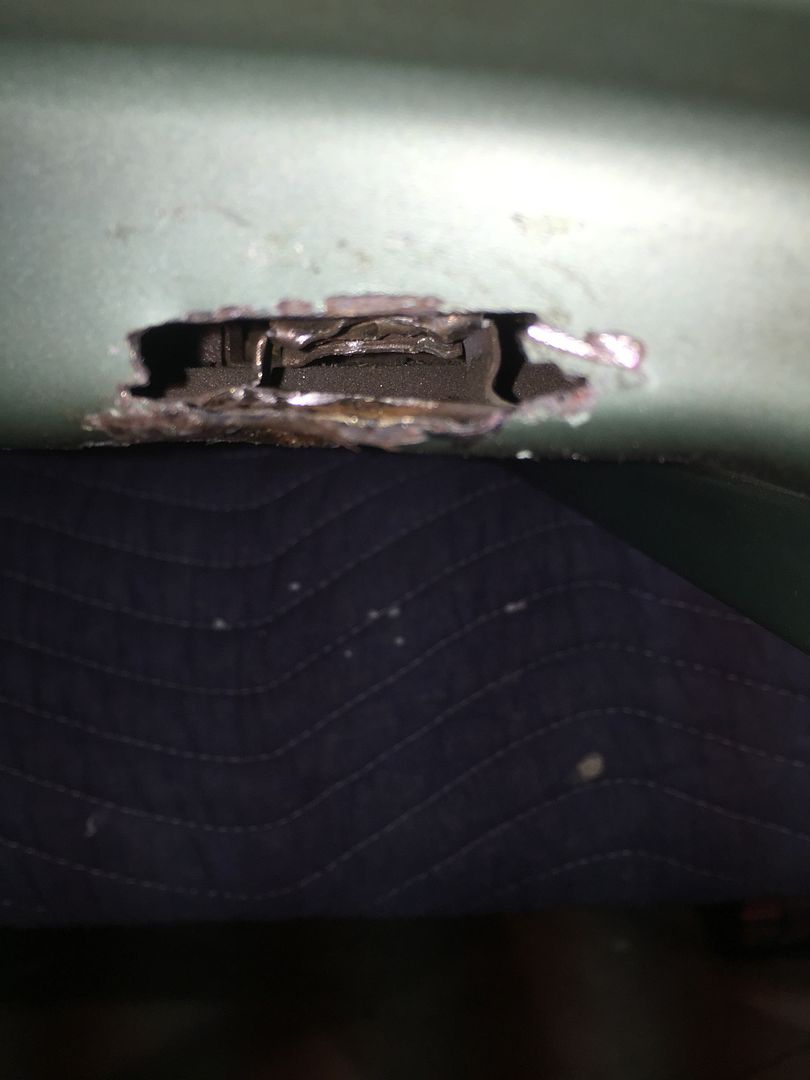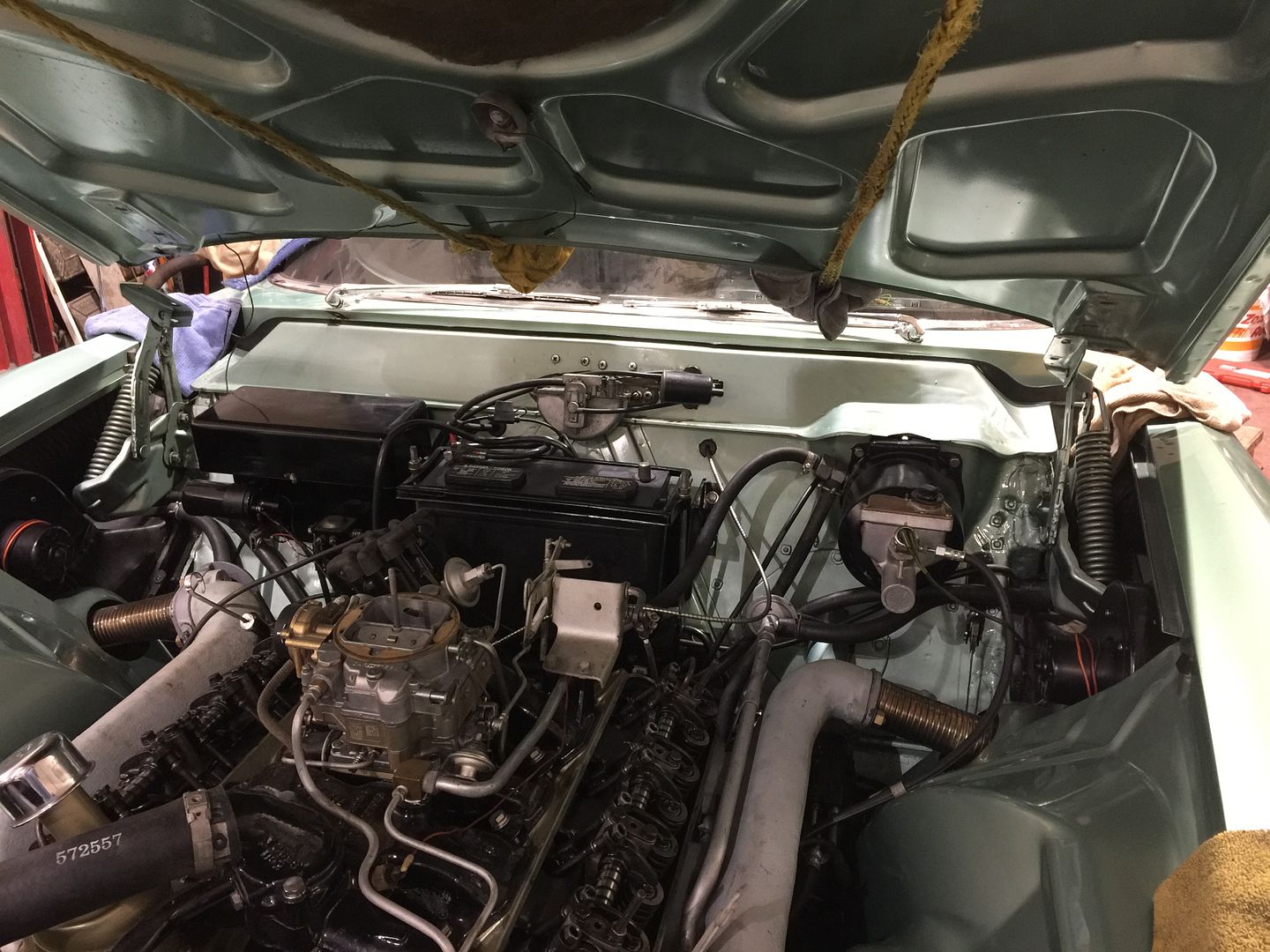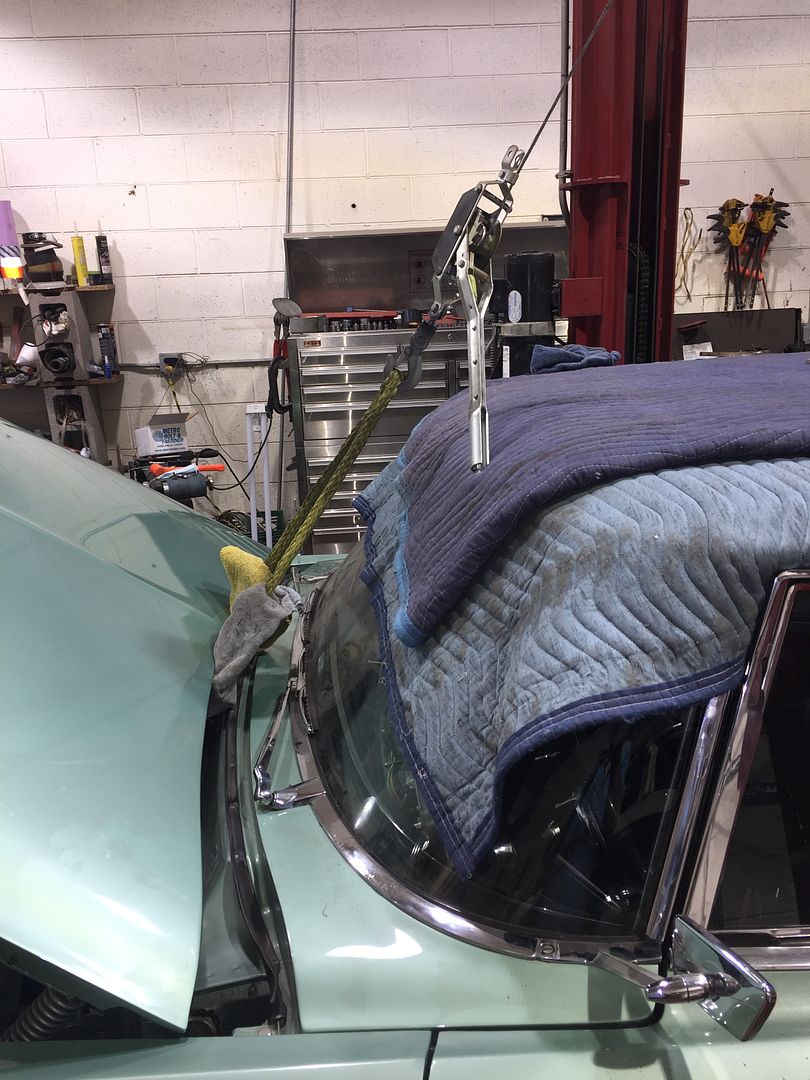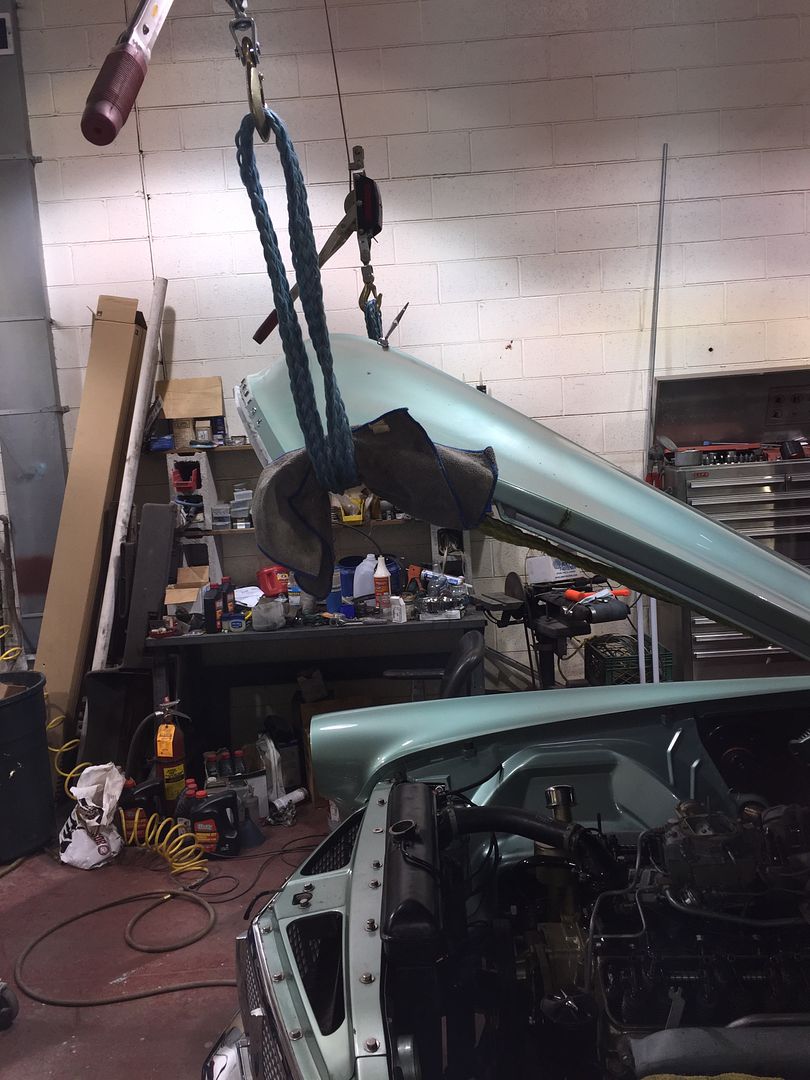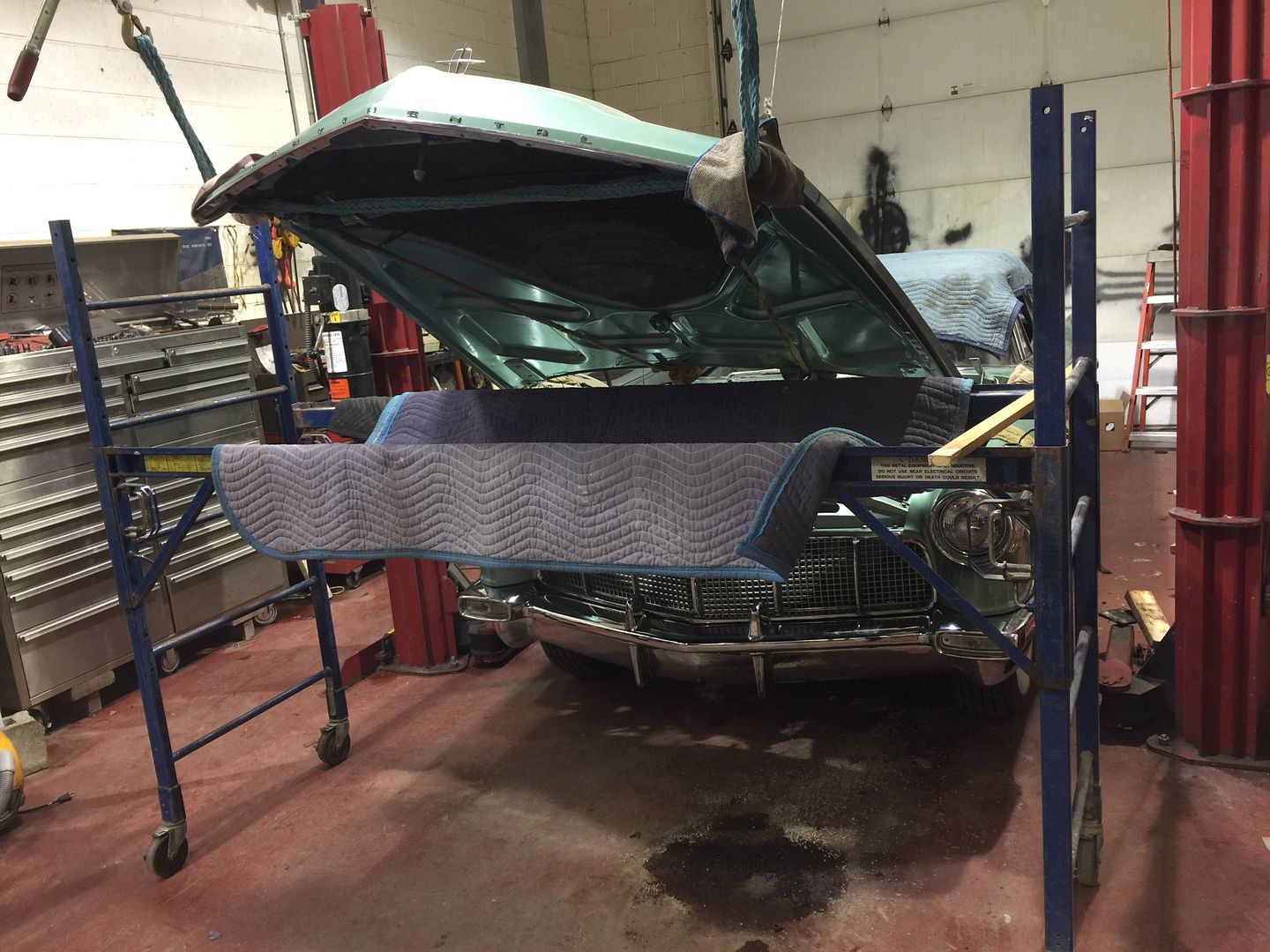While my ceiling is quite tall in my hobby shop I think this might work in a residential garage.
Using 3 light-duty come-alongs and 2 16-foot nylon tow ropes I was able to lift and reinstall a hood, all by my lonesome, just because I thought I could.
The trick is put 50 pounds of air in each tire so there's little rolling resistance. With the hood propped at it's resting angle run both hooks between the windshield and rear hood edge and wrap them around the hood stops under the hood and make a V-shape that hooks onto the rear come-along using a microfiber cloth where the rope meets the paint. Use the other tow strap as a sling to use where the hood curves down. Take up the slack so the hood rises slightly. For additional safety use nylon wire ties to secure the sling and hooks to the bumper stop screws.
Take the bolts out of the hinges and the hood just hangs there. Roll the car back easily so you can access all sides of the hood for slight rope adjustments. It's most stable when level. Reverse the procedure for reinstallation.
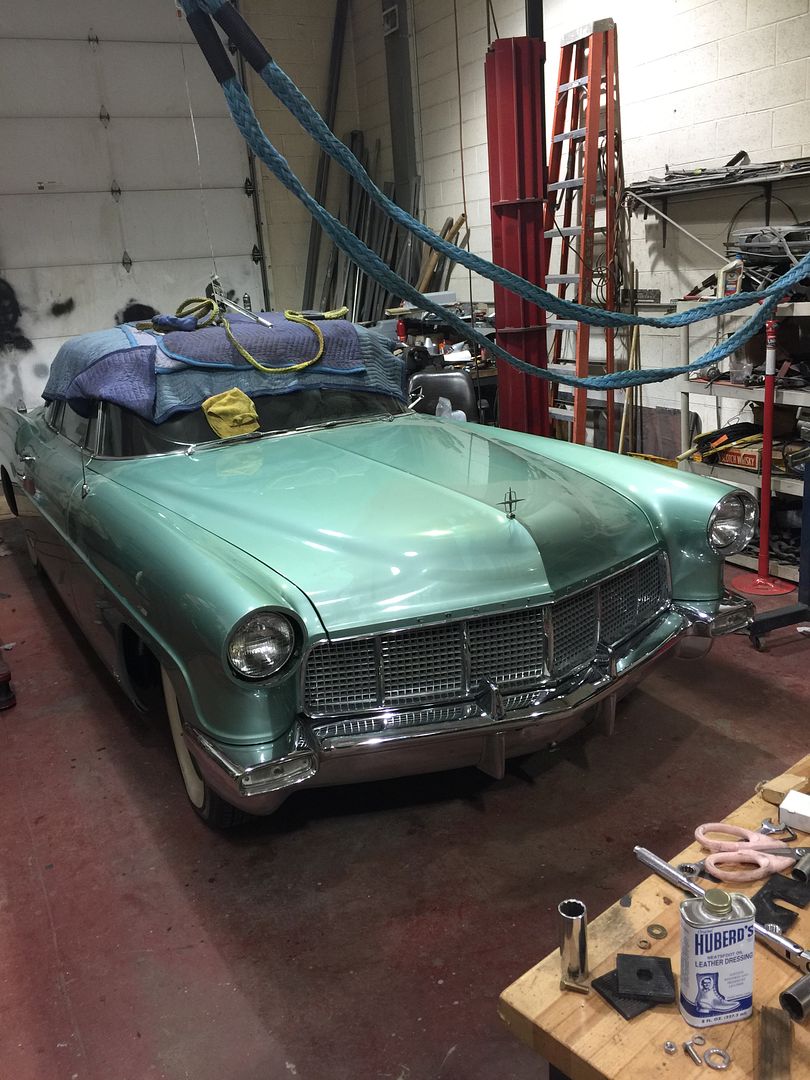


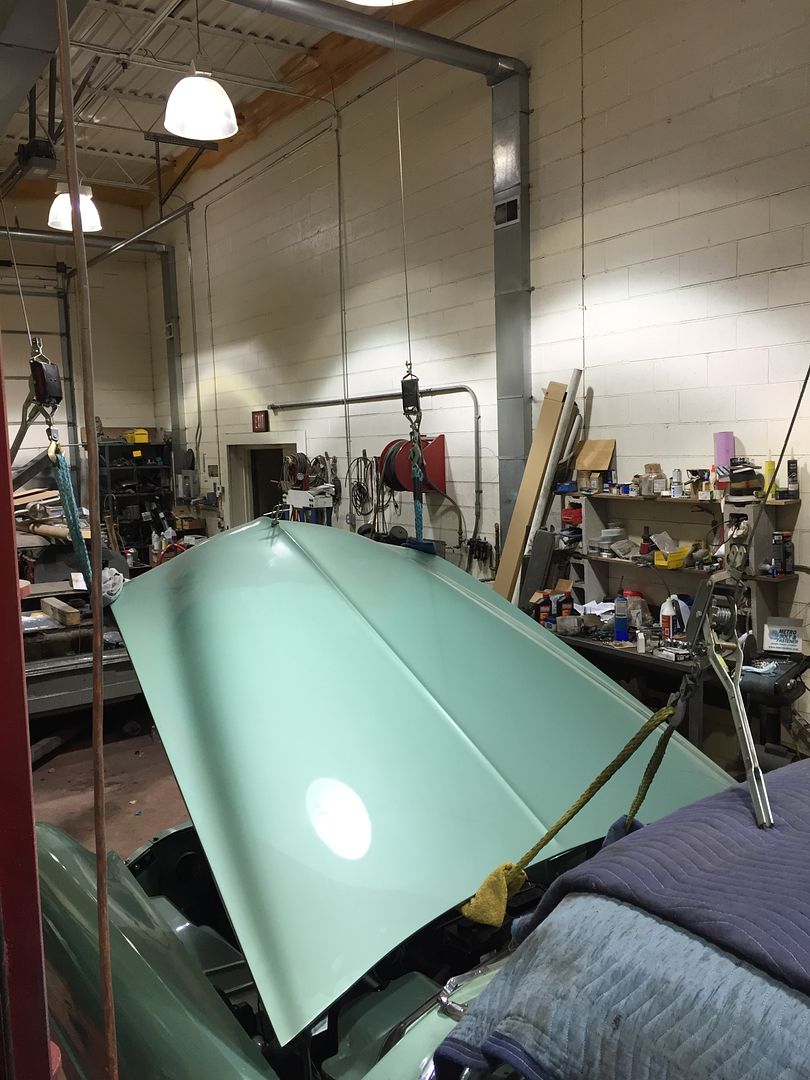


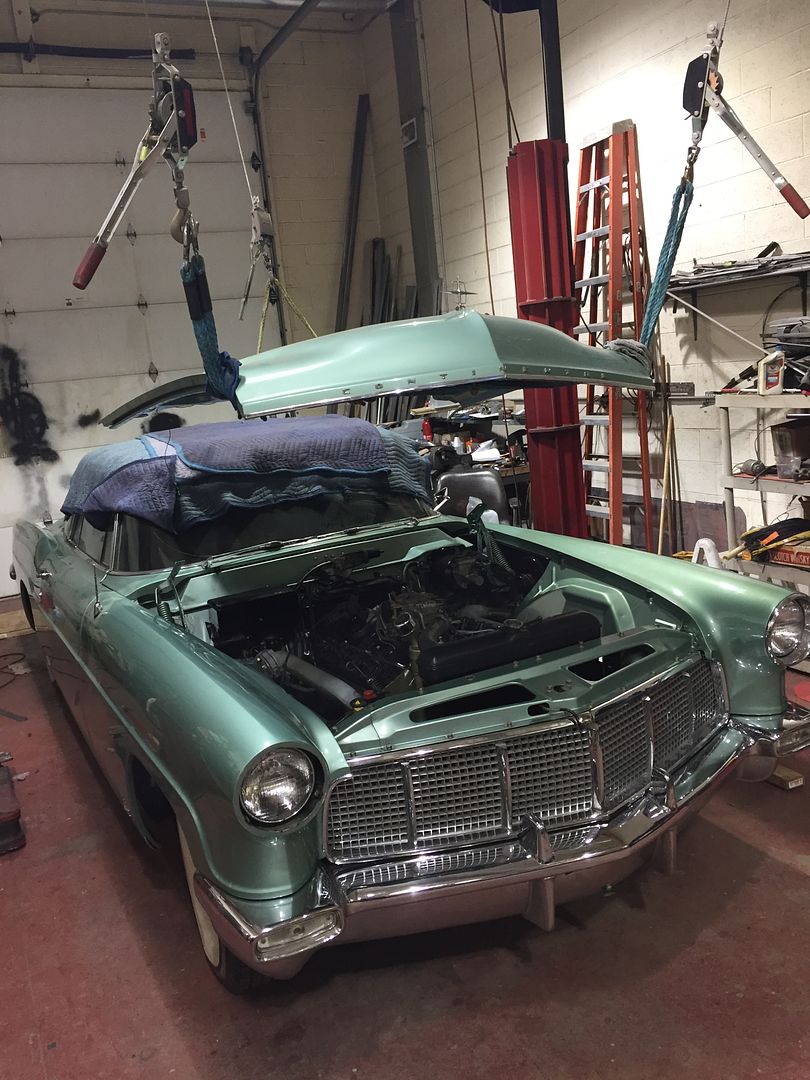
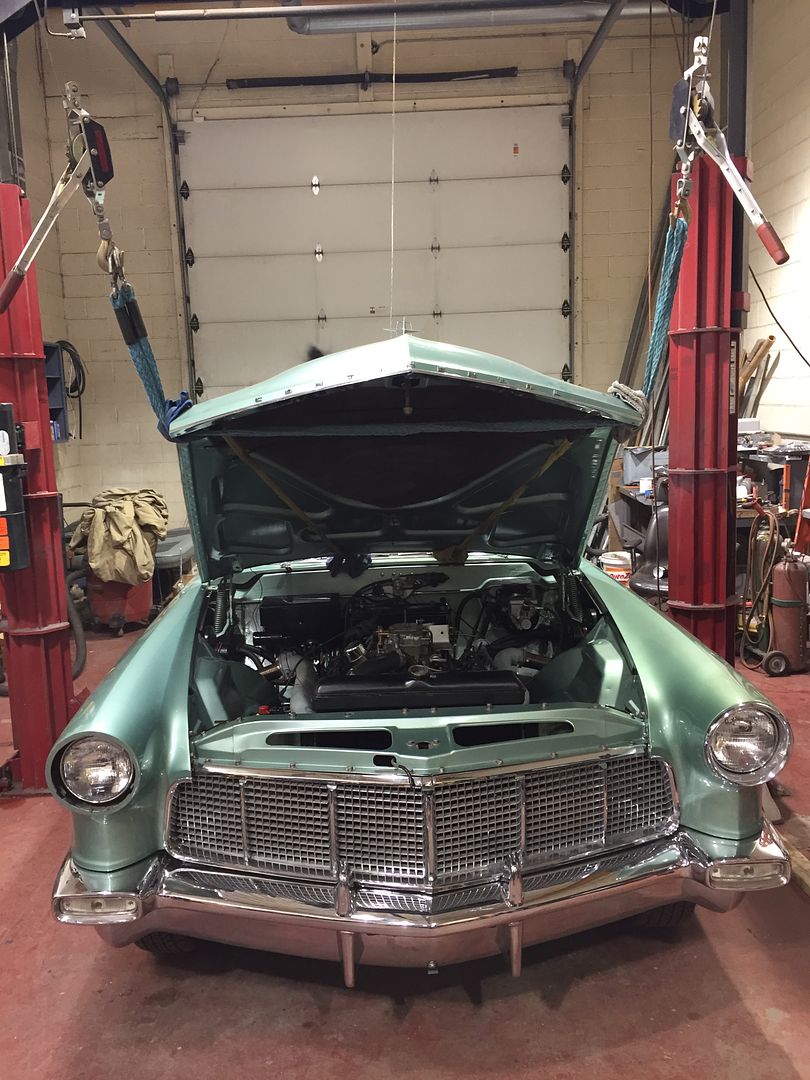

 Reply With Quote
Reply With Quote
